Step-by-step tutorials
In this section we provide a set of examples that showcase how to leverage the functions of our Analytics Toolbox for BigQuery to unlock advanced spatial analyses in your data warehouse platform. They cover a broad range of use cases with methods for data transformations, enrichment, spatial indexing in Quadbin and H3, statistics, clustering, spatial data science methods and more.

How to create a composite score with your spatial data
In this tutorial we show how to combine (spatial) variables into a meaningful composite indicator using CARTO Analytics Toolbox for BigQuery.
STATISTICS
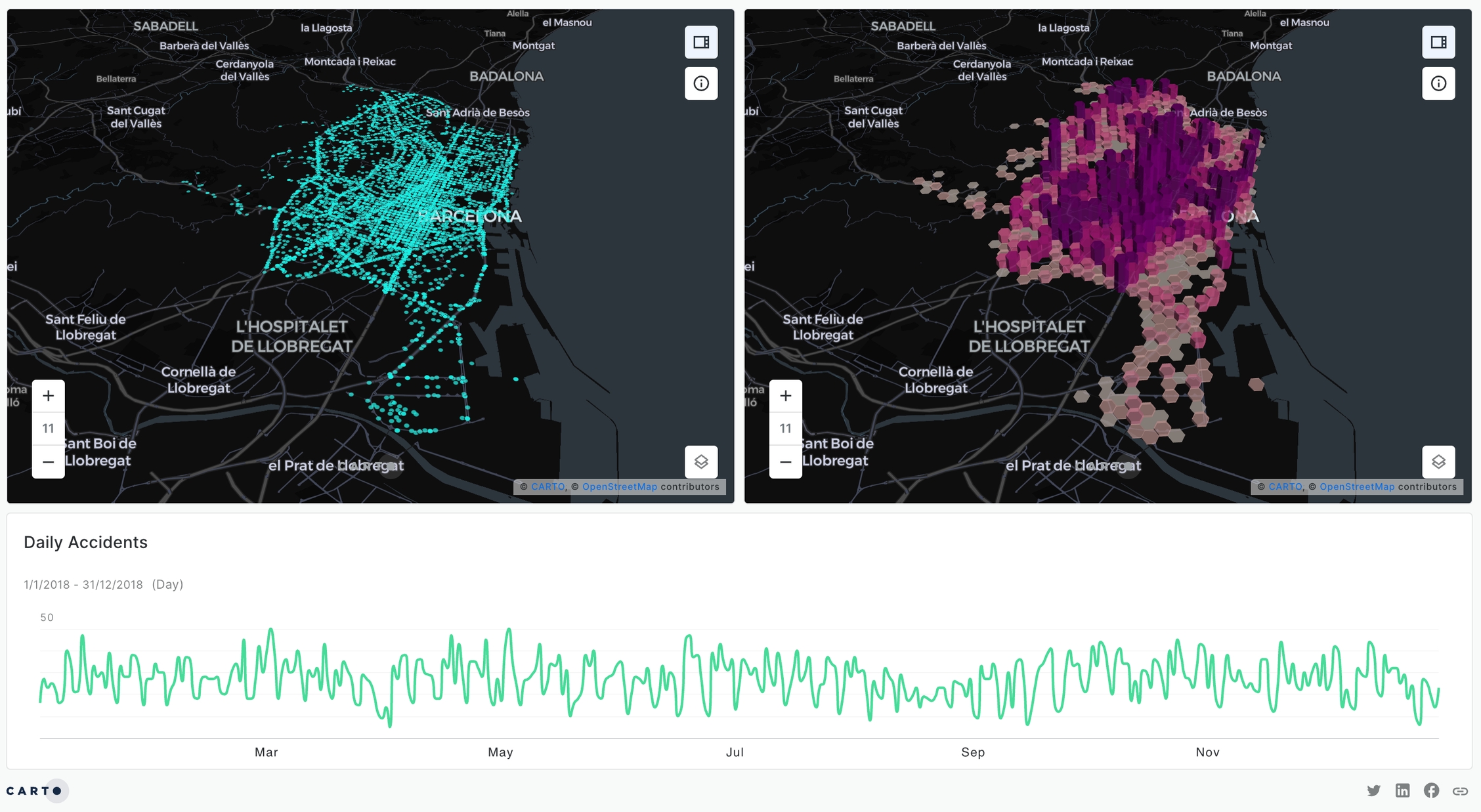
Space-time hotspot analysis: Identifying traffic accident hotspots
Spatiotemporal analysis plays a crucial role in extracting meaningful insights from data that possess both spatial and temporal components. This example shows how to identify space-time hotspots using the Analytics Toolbox.
STATISTICS

Spacetime hotspot classification: Understanding collision patterns
Spatiotemporal analysis is crucial in extracting meaningful insights from data that possess both spatial and temporal components. This example shows how to identify and classify space-time hot and coldspots using the Analytics Toolbox.
STATISTICS

Time series clustering: Identifying areas with similar traffic accident patterns
Spatiotemporal analysis plays a crucial role in extracting meaningful insights from data that possess both spatial and temporal components. This example shows how to cluster geolocated time series using the Analytics Toolbox.
STATISTICS

Detecting space-time anomalous regions to improve real estate portfolio management (quick start)
In this tutorial we show how to detect space-time anomalous regions using CARTO Analytics Toolbox for BigQuery.
STATISTICS

Detecting space-time anomalous regions to improve real estate portfolio management
In this tutorial we show how to detect space-time anomalous regions using CARTO Analytics Toolbox for BigQuery.
STATISTICS
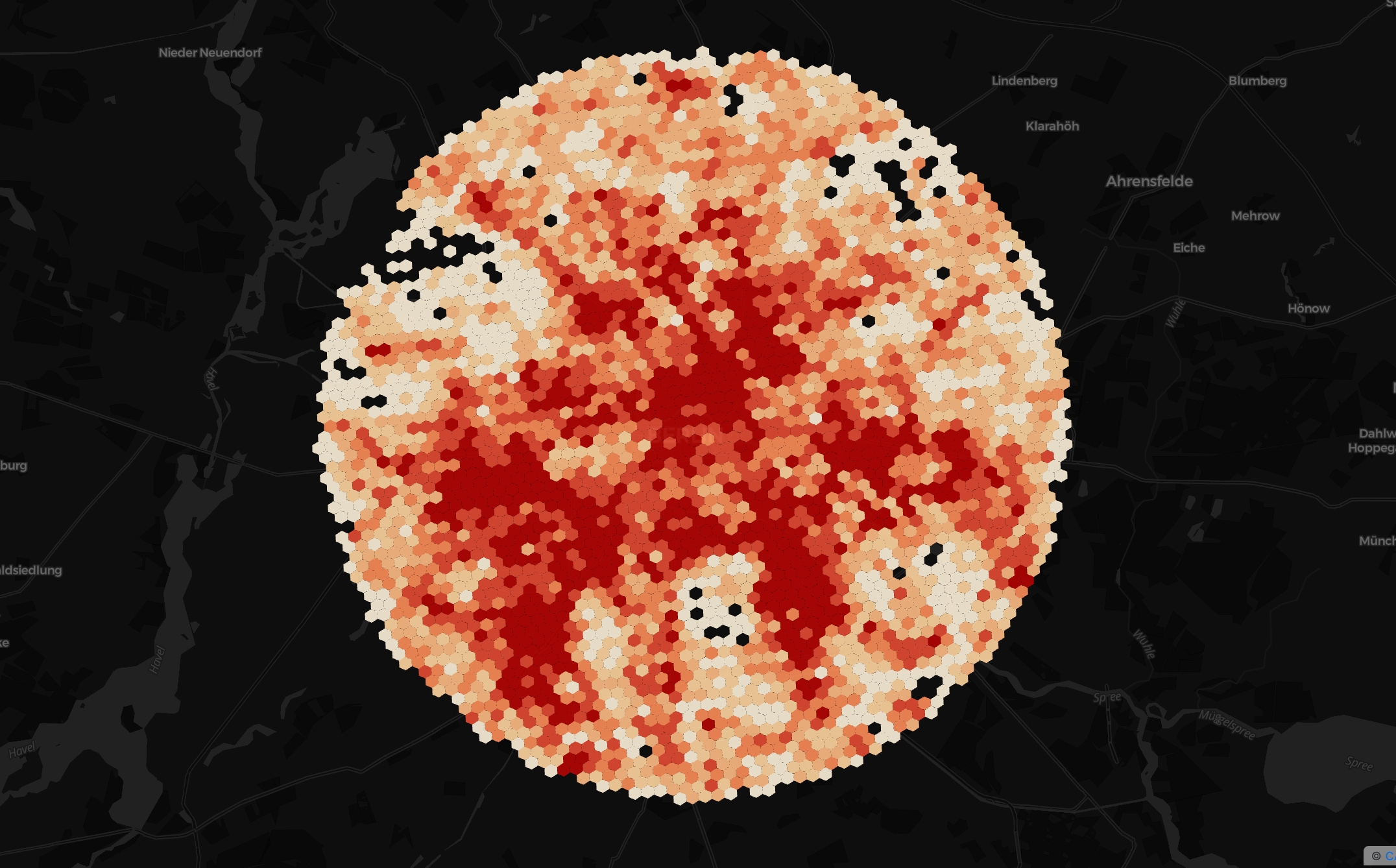
Computing the spatial autocorrelation of POIs locations in Berlin
In this example we analyze the spatial correlation of POIs locations in Berlin using OpenStreetMap data and the MORANS_I_H3 function available in the statistics module.
STATISTICS
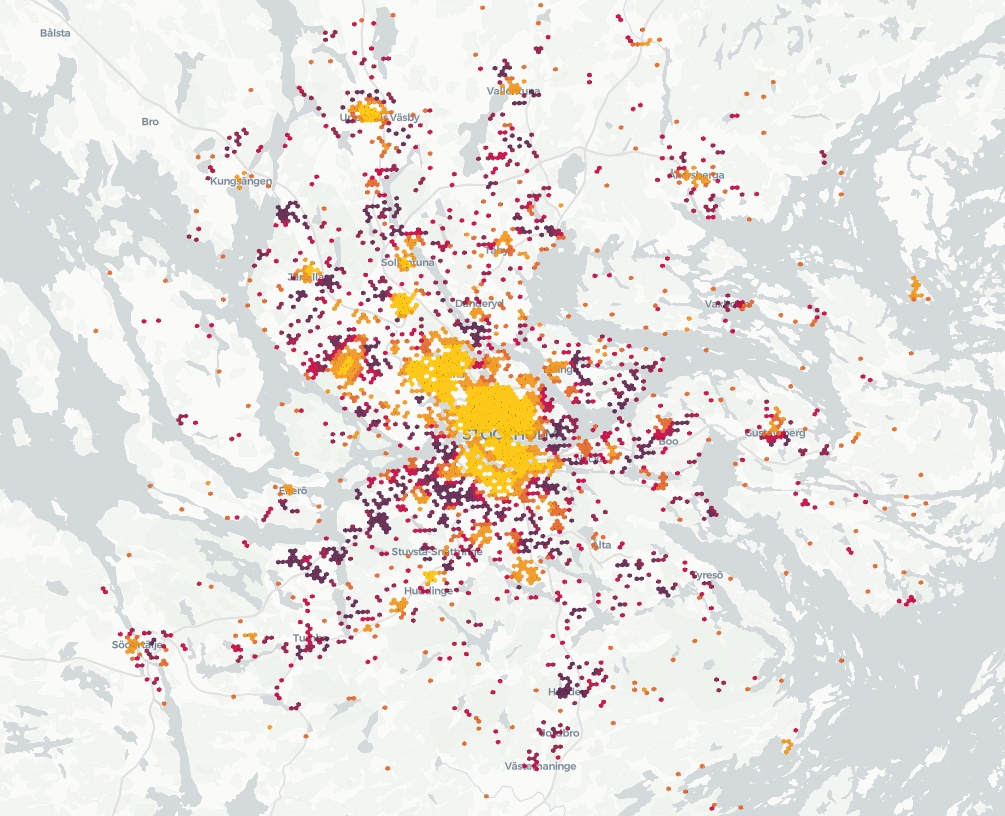
Identifying amenity hotspots in Stockholm
In this example we identify hotspots of amenity POIs in Stockholm using OpenStreetMap data and the GETIS_ORD_H3 function of the statistics module.
STATISTICS
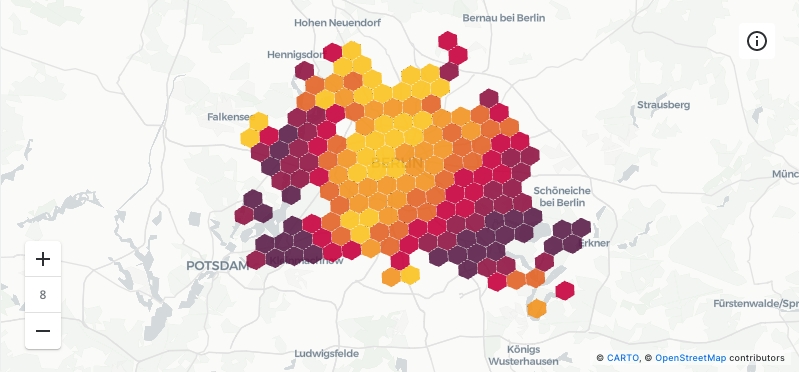
Applying GWR to understand Airbnb listings prices
Geographically Weighted Regression (GWR) is a statistical regression method that models the local (e.g. regional or sub-regional) relationships between a set of predictor variables and an outcome of interest. Therefore, it should be used in lieu of a global model in those scenarios where these relationships vary spatially. In this example we are going to analyze the local relationships between Airbnb's listings in Berlin and the number of bedrooms and bathrooms available at these listings using the GWR_GRID procedure.
STATISTICS

Analyzing signal coverage with line-of-sight calculation and path loss estimation
Coverage analysis is fundamental for assessing the geographical areas where a network's signal is available and determining its quality. This guide shows how to use CARTO telco functionality in the Analytics Toolbox for signal coverage analysis.
TELCO
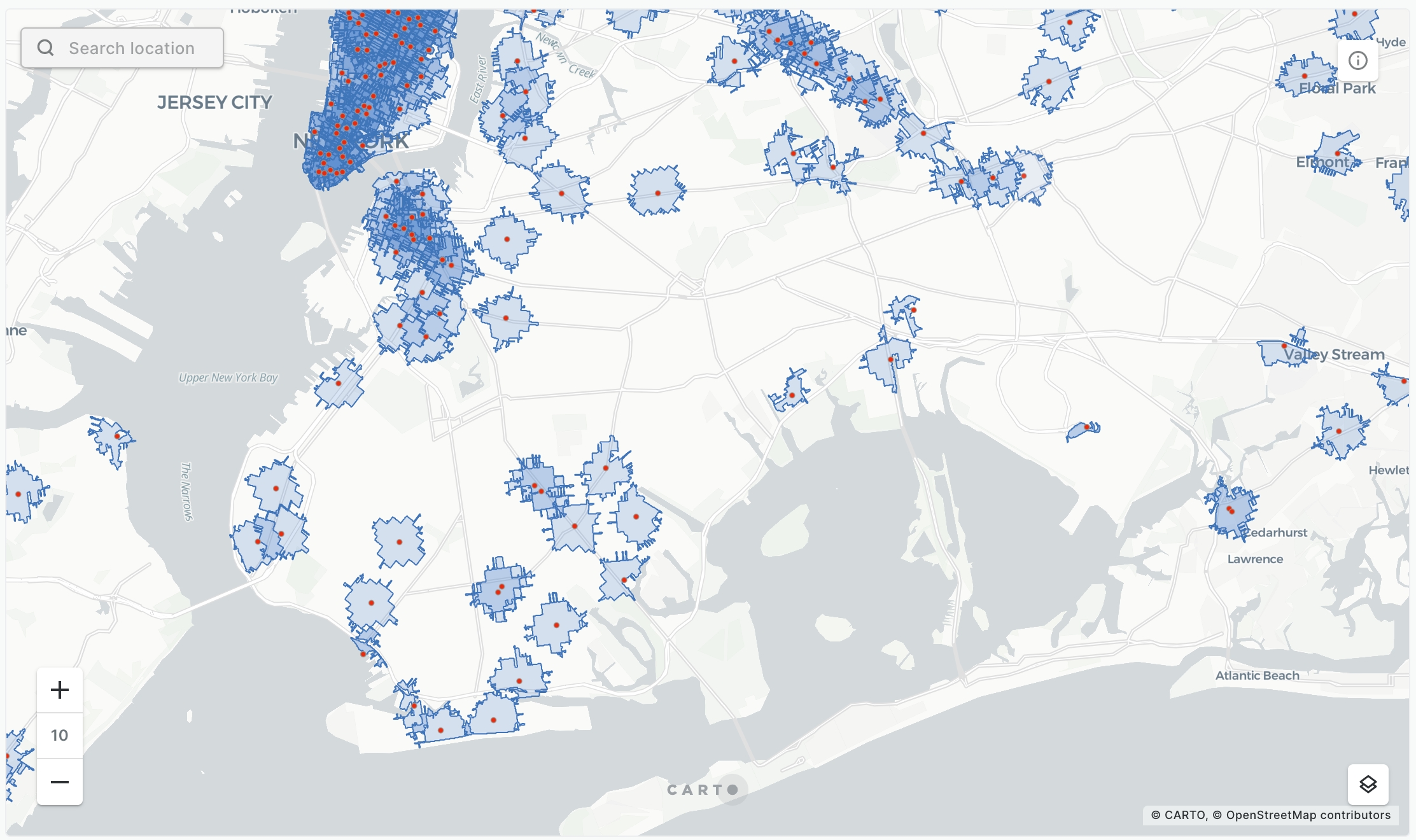
Generating trade areas based on drive/walk-time isolines
We generate trade areas based on drive/walk-time isolines from BigQuery console and from CARTO Builder.
LDS
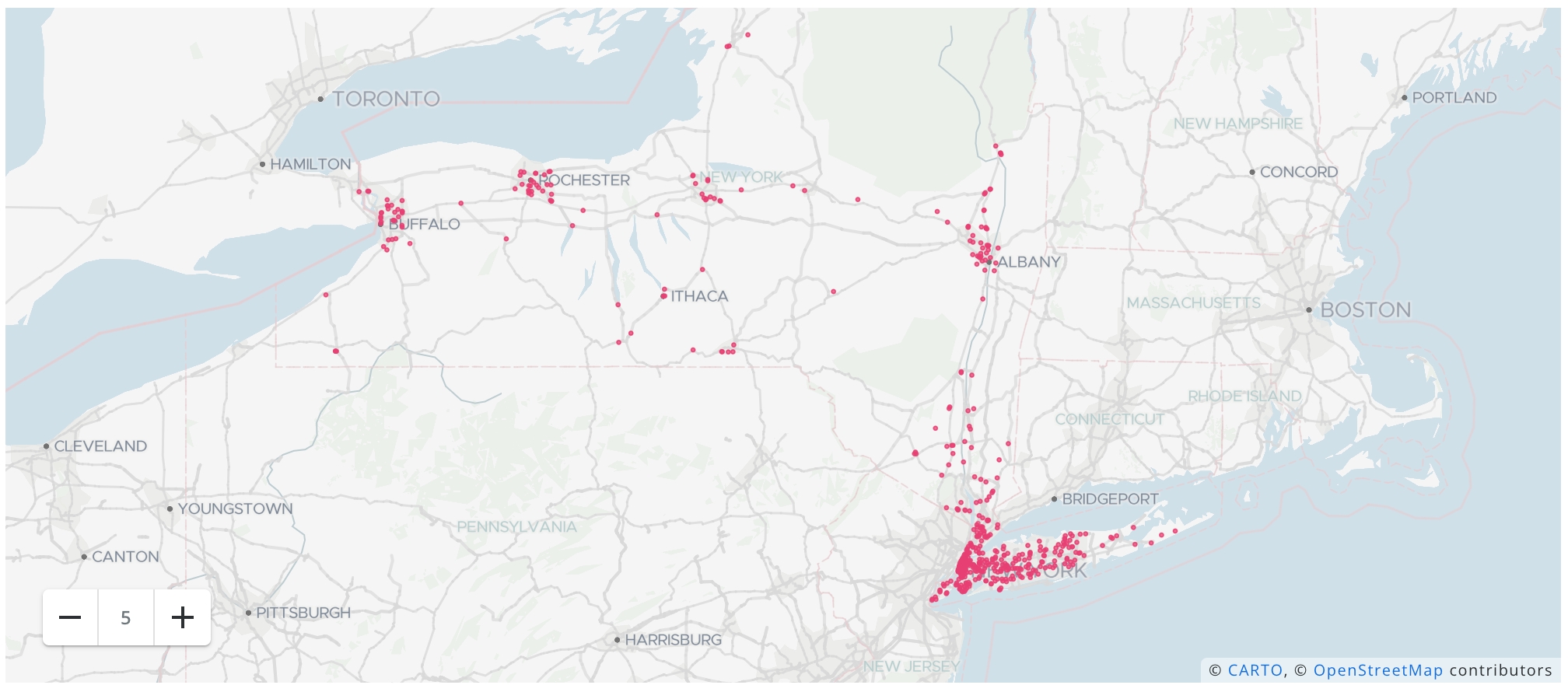
Geocoding your address data
We provide an example that showcase how to easily geocode your address data using the Analytics Toolbox LDS module from the BigQuery console and from the CARTO Workspace.
LDS

Find similar locations based on their trade areas
In this example, we demonstrate how easy it is to use the Analytics Toolbox functions to find how similar different locations are to a chosen one.
CPG
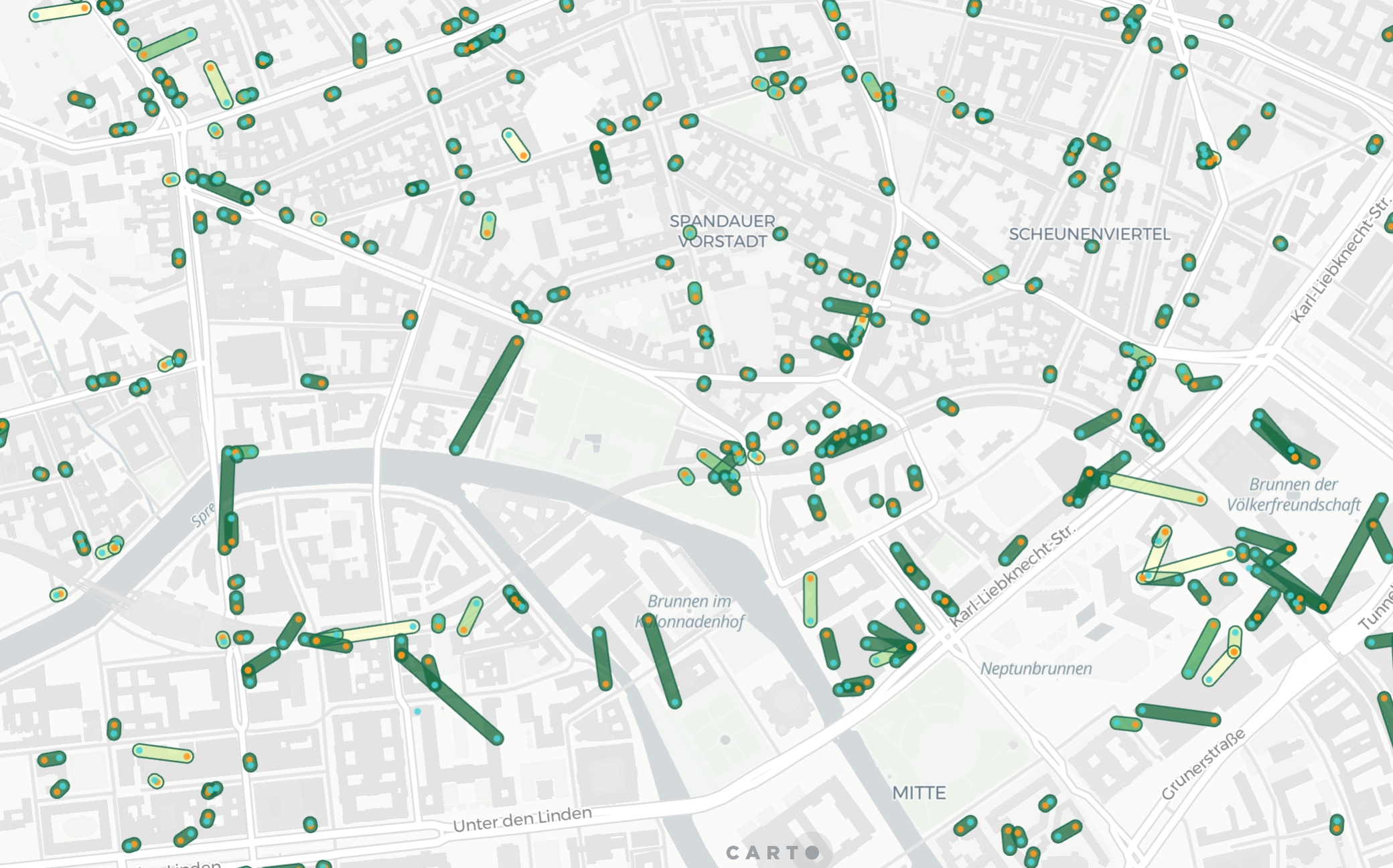
Calculating market penetration in CPG with merchant universe matching
In this example, you will learn how to run universe matching analysis in CPG to match a company's current distributors to a more extensive set of all potential distributors in order to derive market penetration insights.
CPG
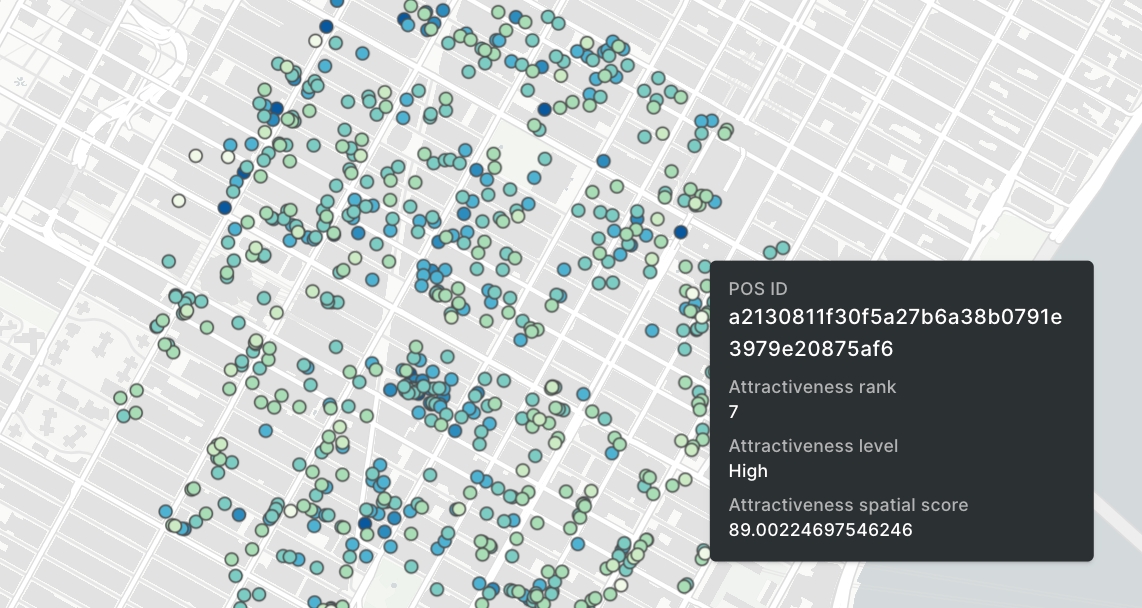
Measuring merchant attractiveness and performance in CPG with spatial scores
In the CGP industry, consolidating diverse data sources into a unified score becomes crucial for businesses to gain a comprehensive understanding of their product's potential in different locations. In this example, you will learn how to create spatial scores to both understand how attractive each merchant is and to identify how well they are performing when it comes to selling a product.
CPG
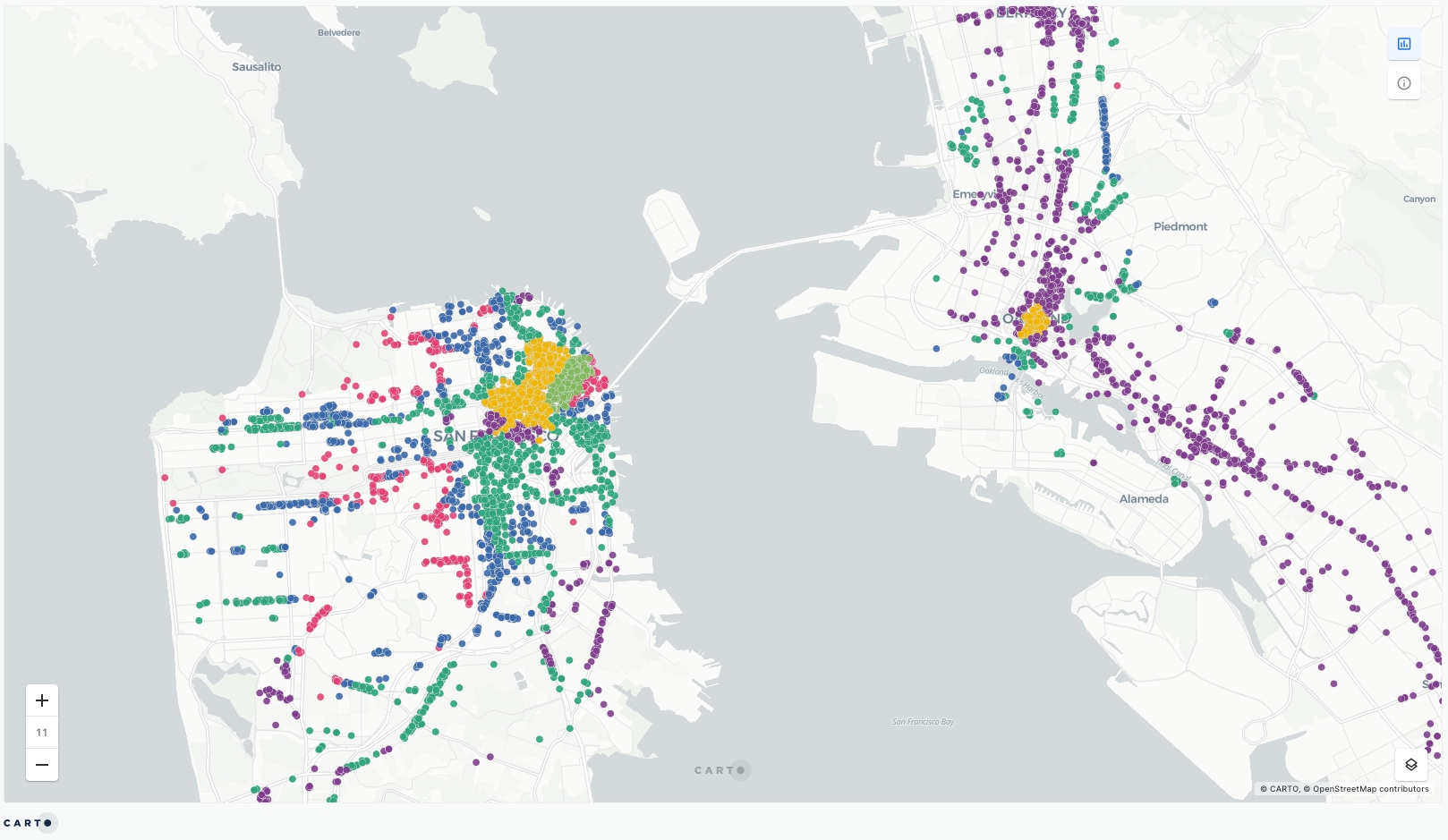
Segmenting CPG merchants using trade areas characteristics
A key analysis towards understanding your merchants’ potential is to identify the characteristics of their trade areas and to perform an appropriate profiling and segmentation of them.
CPG
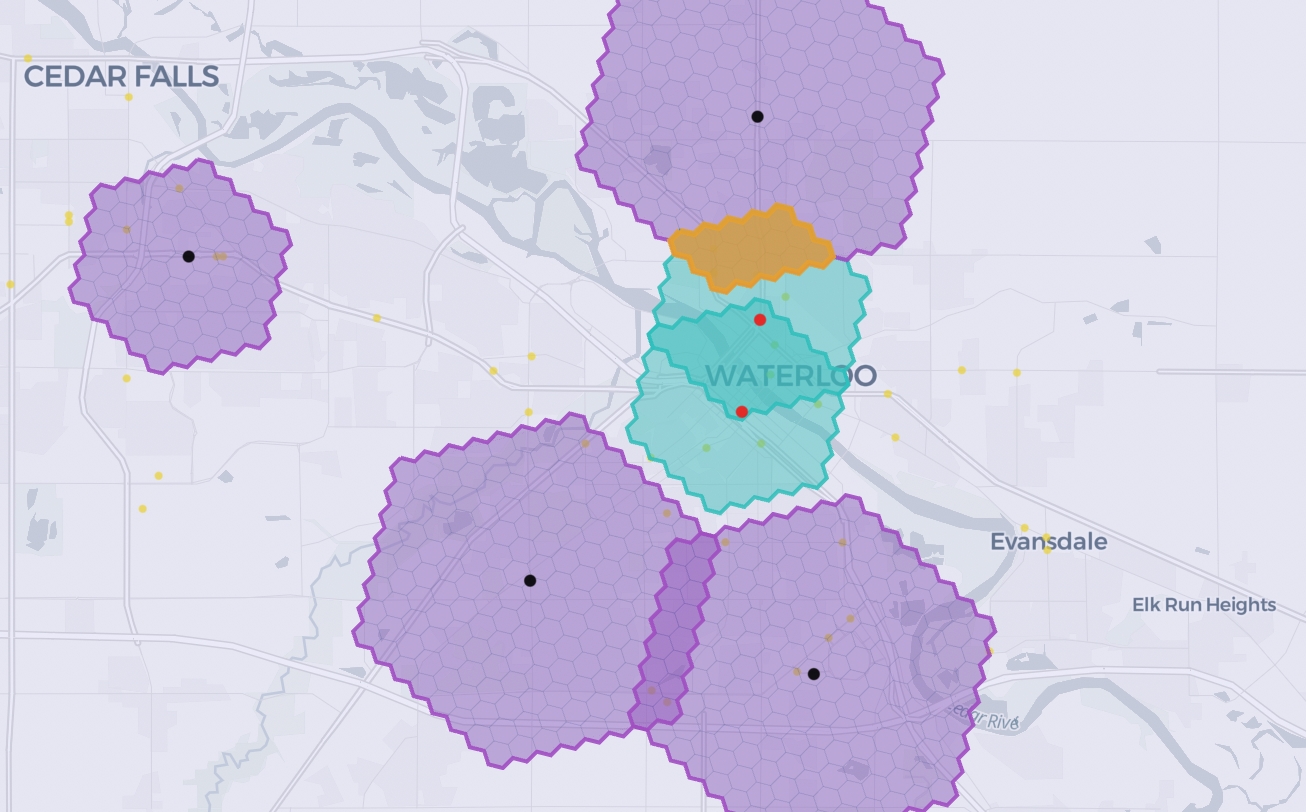
Store cannibalization: quantifying the effect of opening new stores on your existing network
Cannibalization is a very common analysis in retail that consists in quantifying the impact of new store openings on existing stores.
RETAIL
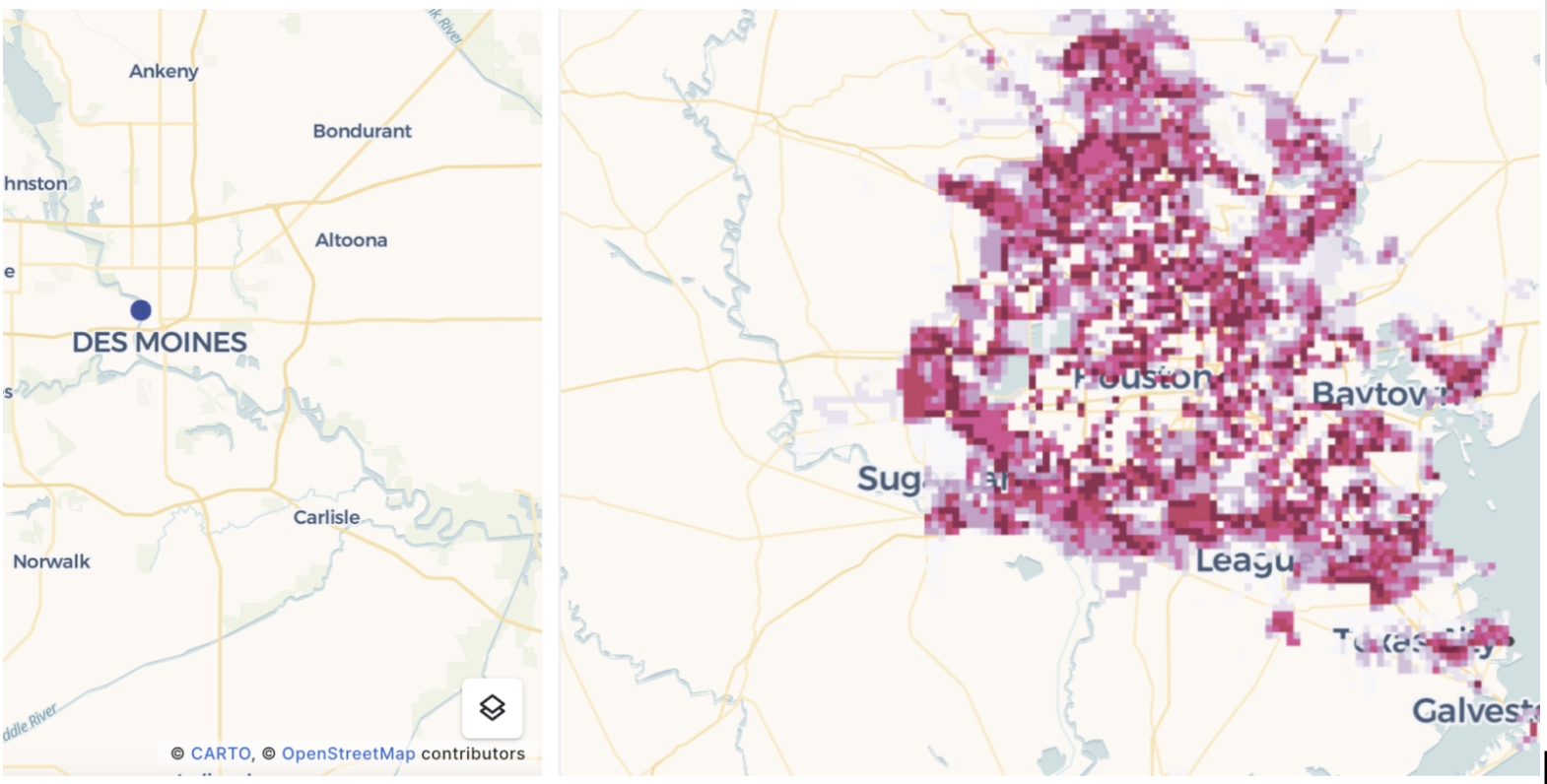
Find twin areas of your top performing stores
The Twin Areas analysis can be used to build a similarity score with respect to an existing site (e.g. the location of your top performing store) for a set of target locations, which can prove an essential tool for Site Planners looking at opening, relocating, or consolidating their retail network. In this example we select as potential origin locations the locations of the top 10 performing liquor stores in 2019 in Iowa, US from the publicly available Liquor sales dataset to find the most similar locations in Texas, US.
RETAIL
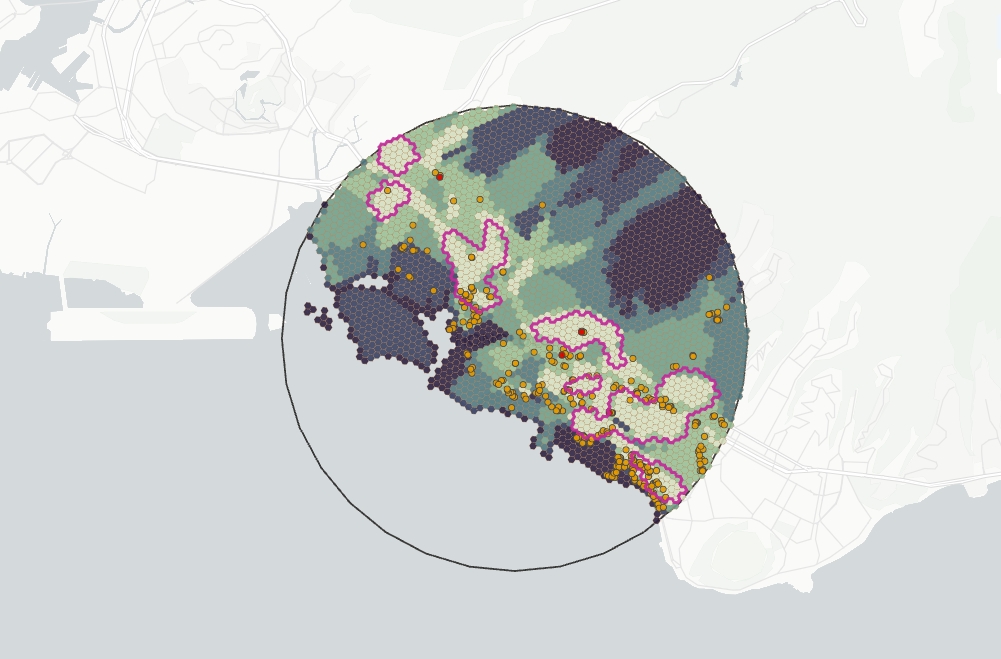
Opening a new Pizza Hut location in Honolulu
We find the best new location for a specific target demographics using spatial indexes and advanced statistical functions.
RETAIL STATISTICS H3 DATA
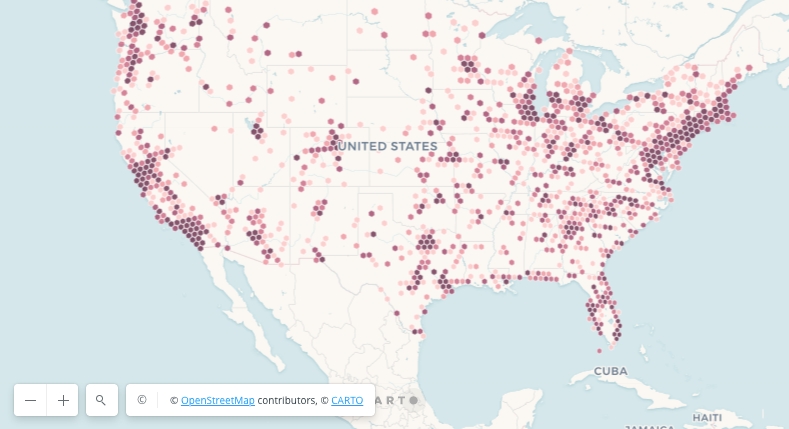
An H3 grid of Starbucks locations and simple cannibalization analysis
We are going to demonstrate how fast and easy it is to make a visualization of an H3 grid to identify the concentration of Starbucks locations in the US.
H3

Data Enrichment using the Data Observatory
In this guide you will learn how to perform data enrichment using data from your Data Observatory subscriptions and the different data enrichment methods available in the Analytics Toolbox.
DATA
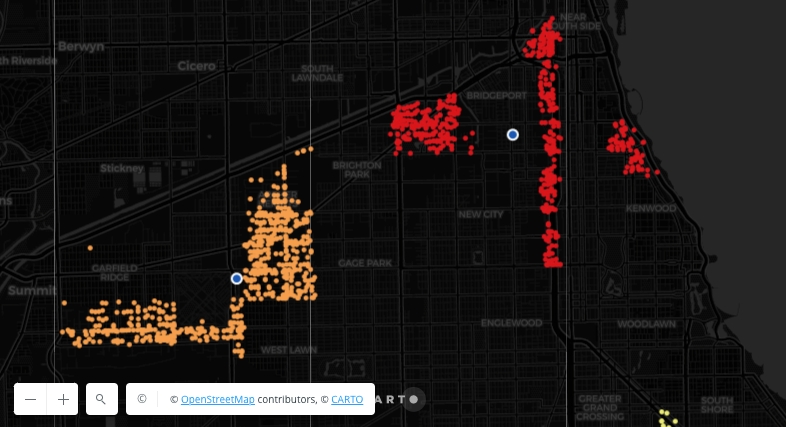
New police stations based on Chicago crime location clusters
In this example we are going to use points clustering to analyze where to locate five new police stations in Chicago based on 5000 samples of crime locations.
CLUSTERING
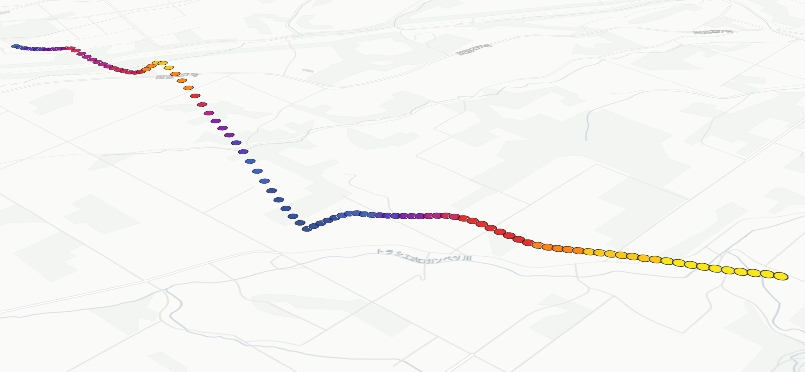
Interpolating elevation along a road using krigin
In this example, we will perform kriging interpolation of the elevation along the so-called roller coaster road on the island of Hokkaido, Japan, using as reference points a nearby elevation measurement.
STATISTICS
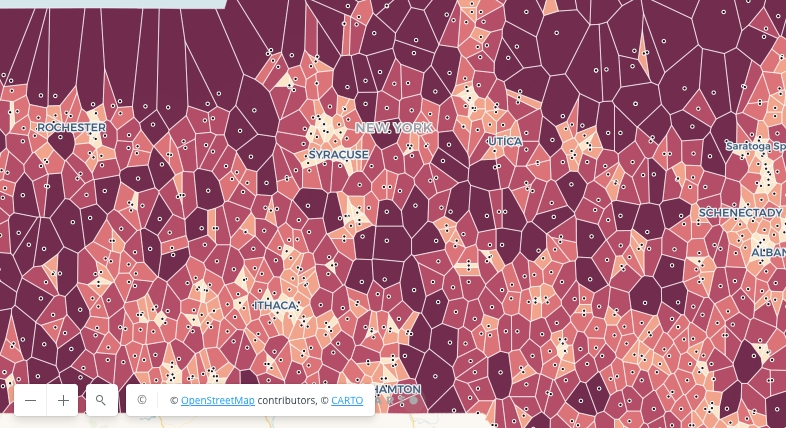
Analyzing weather stations coverage using a Voronoi diagram
Voronoi diagrams are a very useful tool to build influence regions from a set of points and the Analytics Toolbox provides a convenient function to build them. An example application of these diagrams is the calculation of the coverage areas of a series of weather stations. In the following query we are going to calculate these influence areas in the state of New York.
PROCESSING
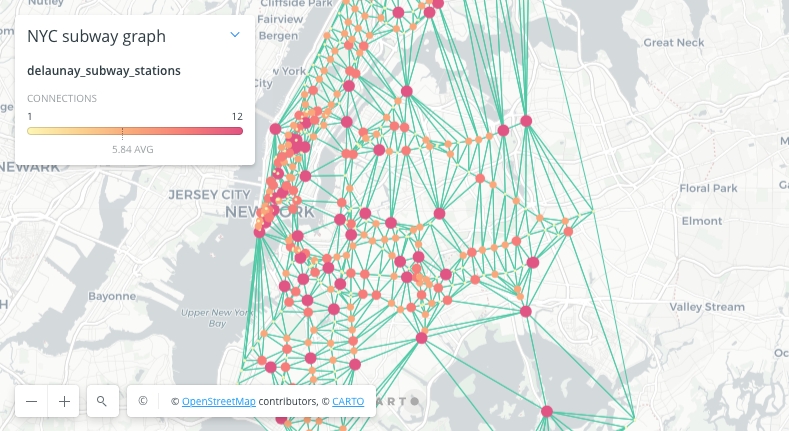
A NYC subway connection graph using Delaunay triangulation
Providing a good network connection between subway stations is critical to ensure an efficient mobility system in big areas. Let's imagine we need to design a well-distributed subway network to connect the stations of a brand-new subway system. A simple and effective solution to this problem is to build a Delaunay triangulation of the predefined stations, which ensures a good connection distribution.
PROCESSING
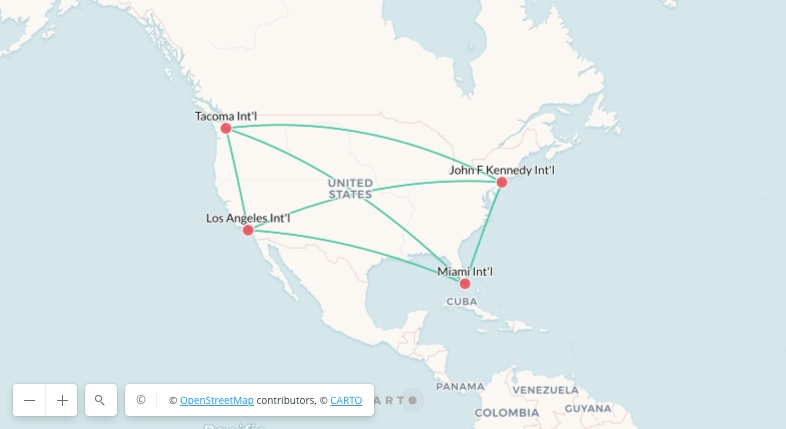
Computing US airport connections and route interpolations
In this example we will showcase how easily we can compute all the paths that interconnect the main four US airports using the Analytics Toolbox.
TRANSFORMATIONS

Identifying earthquake-prone areas in the state of California
In this example we are going to use some of the functions included in CARTO's Analytics Toolbox in order to highlight zones prone to earthquakes, using a BigQuery public dataset.
CONSTRUCTORS
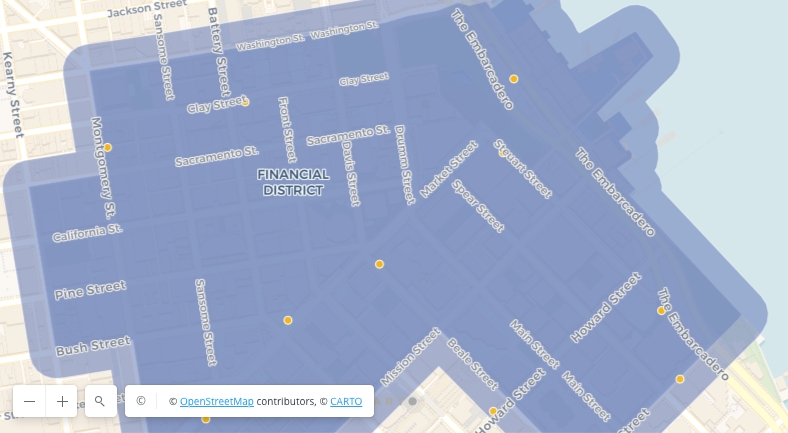
Bikeshare stations within a San Francisco buffer
In this example we are going to showcase how easily we can compute buffers around geometries using the Analytics Toolbox
TRANSFORMATIONS
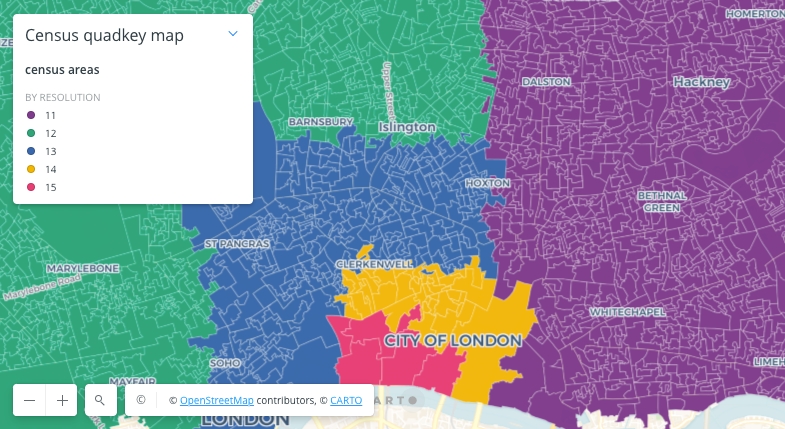
Census areas in the UK within tiles of multiple resolutions
In this example we are going to showcase the extent of quadkey tiles at different resolutions. For this purpose we are using the United Kingdom census areas dataset from CARTO's Data Observatory.
CONSTRUCTORS

Creating simple tilesets
We provide a set of examples that showcase how to easily create simple tilesets allowing you to process and visualize very large spatial datasets stored in BigQuery. You should use it if you have a dataset with any geography type (point, line, or polygon) and you want to visualize it at an appropriate zoom level.
TILER
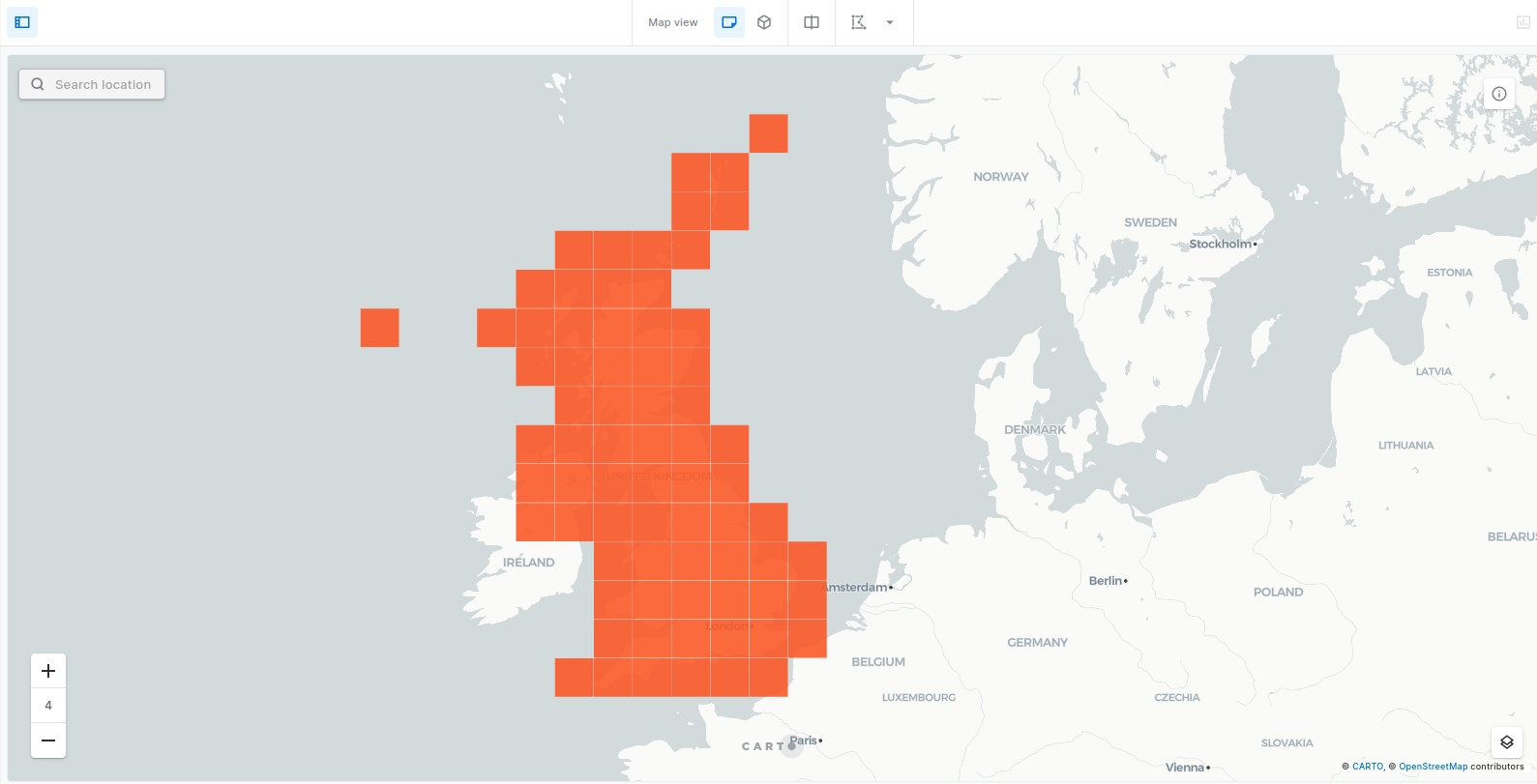
Creating spatial index tilesets
We provide a set of examples that showcase how to easily create tilesets based on spatial indexes allowing you to process and visualize very large spatial datasets stored in BigQuery. You should use this procedure if you have a dataset that contains a column with a spatial index identifier instead of a geometry and you want to visualize it at an appropriate zoom level.
TILER
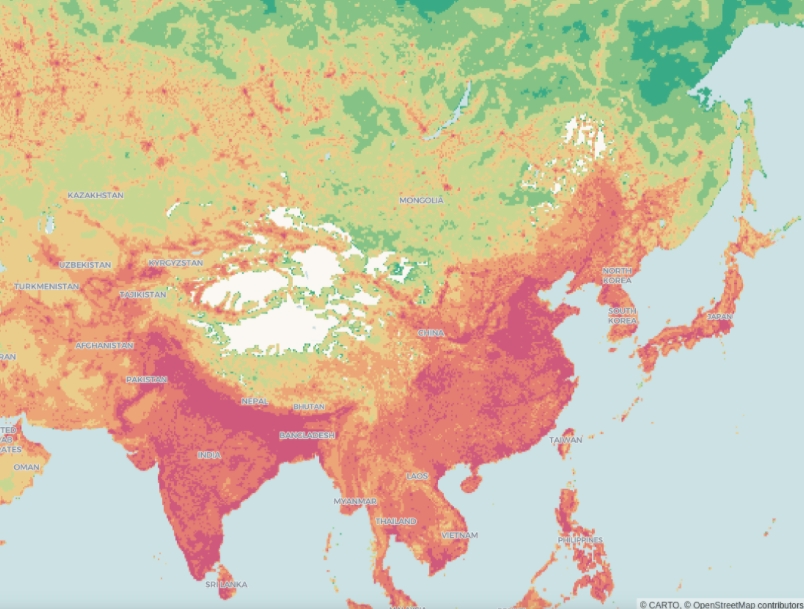
Creating aggregation tilesets
We provide a set of examples that showcase how to easily create aggregation tilesets allowing you to process and visualize very large spatial datasets stored in BigQuery. You can use this procedure if you have a point dataset (or anything that can be converted to points, such as polygon centroids) and you want to see it aggregated.
TILER

Using raster and vector data to calculate total rooftop PV potential in the US
In this example, you will learn how to easily load raster data into BigQuery, and then combine it with vector data using the raster module of the Analytics Toolbox. To illustrate this we will compute the total rooftop photovoltaic power (PV) potential across all buildings in the US.
RASTER
Last updated
Was this helpful?


